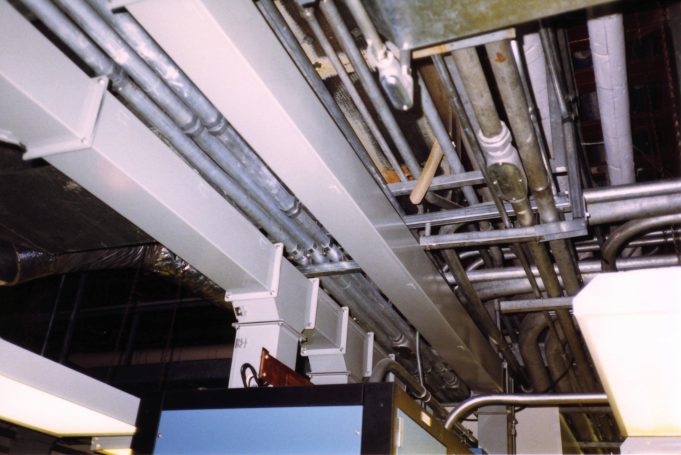Electrical conduit
When an electrician or engineer is designing wiring for a home, they must first choose the sort of wire that will be used. Any challenging work becomes easy when the appropriate type of wiring is used. When it comes to wiring, picking the correct electrical conduit is crucial. This conduit allows the wire to move freely and protects it from the elements for an extended period. So, in today’s post, we’ll look at what Electrical Conduit is and what varieties of Electrical Conduit there are, which we’ll go over in-depth.
What is an electrical conduit?
Cables are routed through an electrical conduit or a plastic or metal pipe. It is commonly used in exposed areas, such as the exterior wall surface, where the elements are present. Wires are also protected and suitable for unfinished areas such as attics, crawlspaces, basements, and outdoor surfaces. At first glance, conduits and armored cable wire may appear quite similar. Cable shields are wrapped around individual wires, just like an electrical conduit. AC is represented by these cables, which may be utilized in any exposed location.
What purpose does electrical conduit serve?
An total transmission is a cylinder used to contain electrical cables for a number of structural or building applications. Wires and anyone who may be in close contact to them are both protected by conduit.
Conduit types
· Galvanized rigid conduit
Galvanized rigid conduits (GRC) are the heaviest and have the thickest walls of all electrical lines. GRC is a corrosion-resistant coating that also protects the wire from electromagnetic interference, according to electricians (EMI). GRC can be utilized outdoors or inside, and it can be visible, hidden, or buried.
· Rigid metal conduit (RMC)
In the pipe industry, rigid metal conduit (RMC) refers to heavy-duty galvanized steel tubing with threaded fittings. They are frequently used outdoors to protect against strong winds, rain, and snow. Structure plays a vital role, particularly in the case of electrical panels, cables, and other equipment. Only ten- to twenty-foot RMC can be purchased, and both ends must be threaded. In terms of electrical wire alternatives, rigid metal is one of the more expensive options on the market. Nevertheless, it is much stronger and more durable, a significant benefit.
· Electrical conduit
A conduit is a route or passageway that may be used in various situations. Roadways may be used as traffic conduits, ditches can be used as water conduits, and websites can be used as information conduits. When we talk about electrical lines, we refer to the physical paths you establish to run wire throughout a facility. They are used to protect and guidewire.
Throughout your career, you’ll encounter numerous types of conduits. The National Electrical Code and various state and municipal construction regulations will provide detailed instructions on utilizing each.
Read More: What is Patio Lanai? A Comprehensive Overview Of Patio Lanai in Homes
· Electrical metallic tubing
EMT is the most commonly used word among our Pro team regarding different forms of electrical conduit. Some newbies refer to it as a catch-all word for all metal conduits. However, this is incorrect.EMT is a rigid metal conduit for an “electrical metallic tube.” It’s usually constructed of galvanized steel. However, it can also be made of aluminum in rare situations.
It’s easier to bend and kink because it’s a thinner metal tube. Installing EMT requires using a bending tool to keep bends from kinking, and to cut it, you need a high-TPI reciprocating saw with a compact instrument.
· Intermediate metal conduit (IMC)
This is identical to the standard rigid metal conduit in that it has the same outer diameter as a common rigid metal conduit but thinner walls. This results in a slightly larger internal area in square inches than the standard conduit, and the size difference often affects the amount of wire fill used. IMC is set up in the same manner as regular RMC is. RMC fittings may be used without modification because the threads are the same. Because of the smaller wall thickness is more likely to kink, making it less forgiving of conduit hiccups. Conduit benders are pretty compelling. The only significant difference between the two items is that RMC is available in all trade sizes up to 6 inches, while IMC is only 4 inches.
RMC and IMC support threaded hub boxes and standard sheet metal boxes with hubs indicated for this purpose.
Why use conduit wiring?
Styles
Conduit comes in various forms and is used to run electrical wire in and around your home’s exposed areas. Basements, garages, barns, laundry rooms, and exposed places are possibilities. The conduit may be run inside the walls of your home, allowing you to draw new circuits via the existing conduit lines in the future. You may pick from a few different types of wiring within the conduits.
THHN or THWN-type wire is frequently drawn through the conduit, whether it is stranded or solid. The wire size will vary based on how much amperage is required to power the point you’re feeding, eventually defining the length of the conduit you’ll need.
Protecting wires from damage
There is another solution for this reason: when the wire has to be secured from harm. Single strands of electrical wire dragged through metal conduits are one method. Many cables can be removed from one electrical box to the next using these single strands within the tube. Lines are available in various types, ranging from reasonably sturdy construction to exceedingly rigid conduits that can be driven over without causing damage. You must select a tube that meets your requirements while also adhering to the National Electrical Code.












